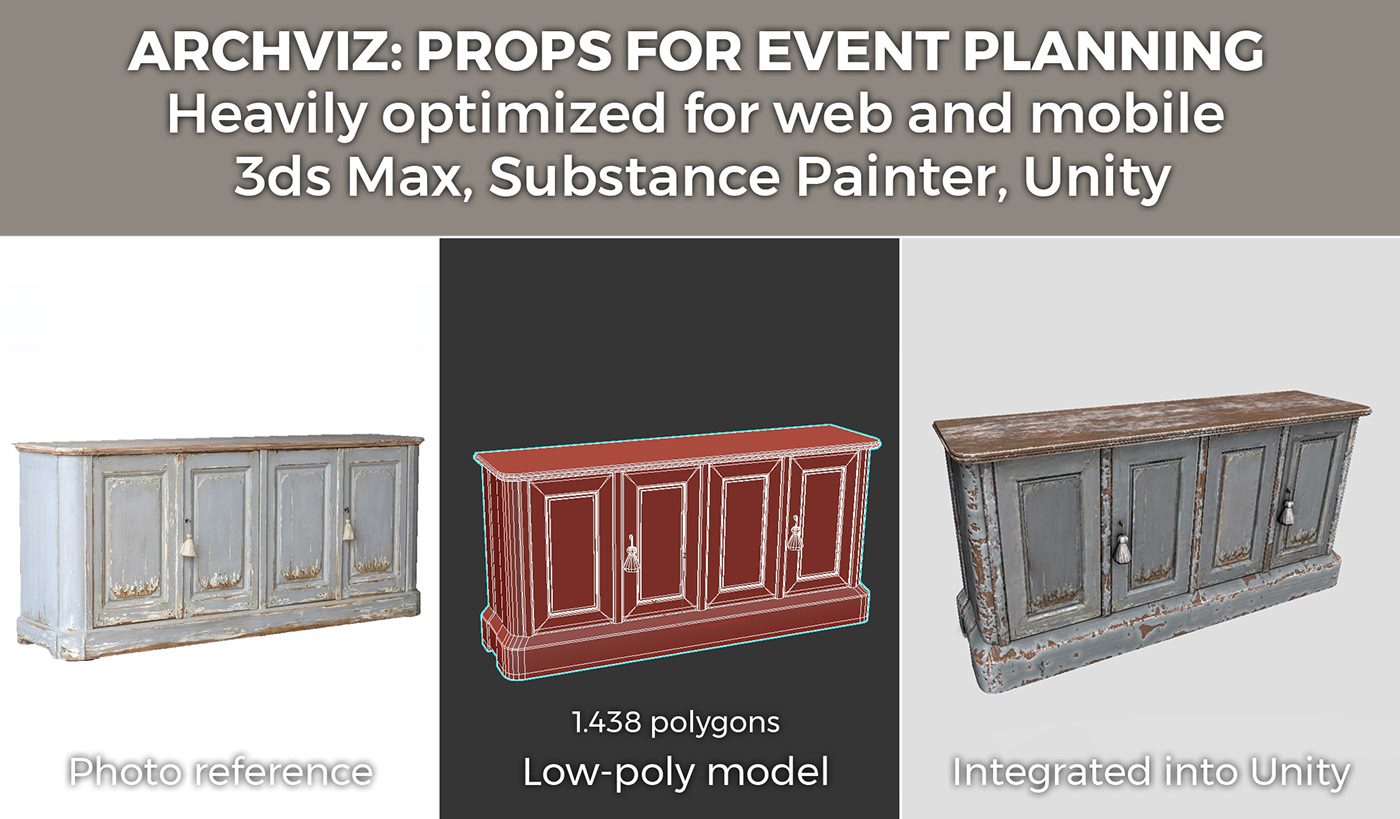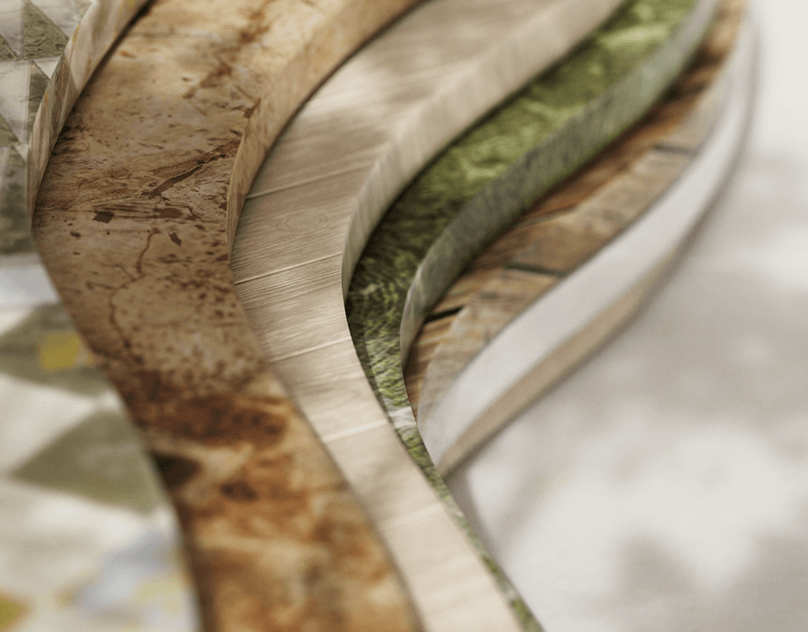
It would have been nice to be able to make this chandelier have a translucent, refractive material, but the limitations of the interface demanded that we simplify the materials where we could. So instead of shimmering crystal, the viewer gets a more opaque silhouette of the contours. Since it was designed for event planning visualization, it still gives the client a good idea of how the chandelier might look in the venue they choose!

It's always a daunting task as an artist to analyze a real-life prop and determine where you can make polygon reductions. Designing for the web and mobile reminds me of the old days of gaming in this way, where an FPS game character in the early 2000s had a very low polygon budget, so you'd have to really focus on what parts matter and what parts can be chopped down a bit.

Since the interface had many lighting limitations and did not have real-time ambient occlusion, lots of the assets would need to have the AO baked in and exaggerated a bit so that the details wouldn't get washed out at a distance.

The polygon limit for a scene was pretty tight, as an event could include dozens of tables, hundreds of chairs, centerpieces, table settings, lighting, etc. Each model had 3 LOD levels as well, with the limit on the lowest level being very restrictive.






